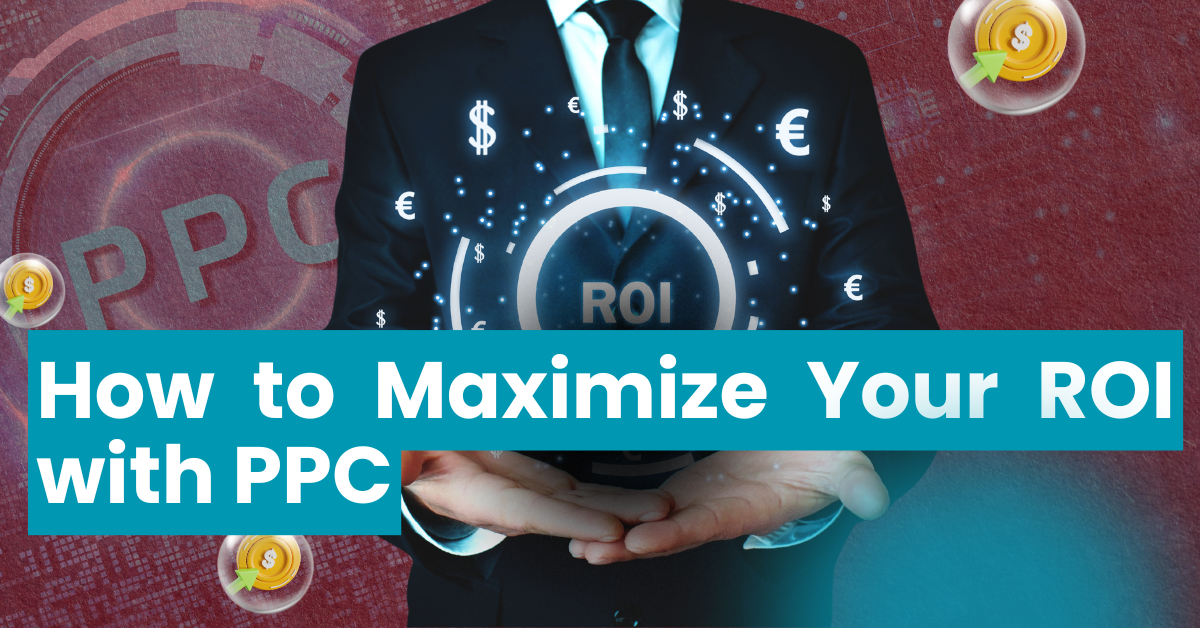Hello, people who are new to digital marketing! Do you want to learn more about Pay-Per-Click (PPC) ads and how it can help you make more money? You’re in the right spot! No need to worry about how to make the most of your PPC ROI; I’ll break it down for you.
A new report by WordStream says that the average conversion rate for PPC ads in all fields is 3.75 percent for search ads and 0.7 percent for display ads. This means there is a lot of room to make things better and more efficient. Google also says that for every $1 that a business spends on Google Ads, it makes an average of $2 in sales. These numbers show how powerful PPC ads can be when used correctly.
Not only that, though; it’s not just paid ads. Sachs Marketing Group says that if you want to improve your PPC ROI, you need to focus on keyword optimization, use ad extensions, and make focused landing pages. A HubSpot report also shows that companies that follow up with leads make 50% more sales at a 33% lower cost. This shows how important it is to have a complete PPC plan that includes more than just clicks.
Understanding PPC and ROI: The Basics
First, let’s make sure we understand what we’re talking about. You pay for pay-per-click (PPC) ads like you would for a show. Your ad only costs you money if someone clicks on it. ROI, on the other hand, tells you how much you get back for the money you spend. When you use pay-per-click (PPC), you need to make sure that those clicks lead to something useful for your business.
Essential Resources to Boost Your PPC ROI
1. Keyword Research Tools
First things first, you need to know what words your potential customers are typing into search engines. Tools like Google Keyword Planner or SEMrush are your best friends here. They’ll help you find keywords that are relevant to your business and have a good balance of search volume and competition.
2. Ad Copy Generators
Creating compelling ad copy can be a challenge, especially when you’re just starting out. Tools like Jasper.ai or Copy.ai can help you craft attention-grabbing headlines and descriptions that make people want to click.
3. Landing Page Builders
Once someone clicks on your ad, where do they go? Your landing page needs to be on point. Platforms like Unbounce or Instapage let you create and test landing pages without needing to be a coding wizard.
4. Analytics Tools
You can’t improve what you don’t measure. Google Analytics is a must-have for tracking how people interact with your site after clicking your ad. It’s free and packed with insights that can help you refine your PPC strategy.
5. Bid Management Software
As your PPC campaigns grow, managing bids manually can become a full-time job. Tools like Optmyzr or Acquisio can automate this process, helping you get the most bang for your buck.
Strategies to Make Your PPC More Effective
Now that you’ve got your toolkit, let’s talk strategy. Here are some tried-and-true ways to boost your PPC effectiveness:
1. Target Long-Tail Keywords
Instead of going for broad, competitive keywords, focus on longer, more specific phrases. They might have less search volume, but they often convert better because they catch people further along in the buying process.
2. Use Ad Extensions
These little extras in your ads (like site links or call buttons) don’t cost extra but can significantly improve your click-through rates. More clicks at the same price? Yes, please!
3. Implement Negative Keywords
Sometimes, it’s about who you don’t want to reach. Negative keywords help you avoid showing your ads to people who aren’t likely to be interested, saving you money and improving your ROI.
4. A/B Test Everything
From your ad copy to your landing pages, always be testing. Small changes can lead to big improvements in your conversion rates.
5. Focus on Quality Score
Google rewards ads that are relevant and useful with better ad positions and lower costs. Work on improving your Quality Score by ensuring your keywords, ads, and landing pages are all closely aligned.
Measuring and Improving Your PPC ROI
Alright, you’ve got the tools and the strategies. But how do you know if they’re working? Here’s how to keep tabs on your PPC ROI:
- Track Conversions: Set up conversion tracking in Google Ads to see which clicks are turning into customers.
- Calculate Your ROI: Use this simple formula: (Revenue – Cost) / Cost = ROI. If you’re spending $100 on ads and making $300 in sales, your ROI is 200%.
- Monitor Cost Per Acquisition (CPA): This tells you how much you’re spending to get each customer. The lower, the better!
- Keep an Eye on Quality Score: A higher Quality Score usually means a better ROI.
- Regularly Review and Adjust: PPC isn’t a set-it-and-forget-it deal. Keep tweaking and testing to improve your results.
Wrapping It Up
Maximizing your PPC ROI isn’t rocket science, but it does take some effort and the right resources. Start with solid keyword research, craft compelling ads, create killer landing pages, and always be measuring and adjusting. With these tools and strategies in your arsenal, you’ll be well on your way to PPC success.
However, staying up-to-date with the ever-changing landscape of PPC advertising can be challenging, especially for beginners. There is nothing wrong with you looking for this information with the AdStage website. They offer a resource where you can get the latest news about PPC & Advertising, helping you stay informed about industry trends, algorithm updates, and best practices. By keeping your finger on the pulse of the PPC world, you can adapt your strategies quickly and maintain a competitive edge.
Remember, the key to great ROI is continuous improvement. So don’t be afraid to experiment, learn from your mistakes, and celebrate your wins. Happy advertising, and may your ROI always be on the up and up!

